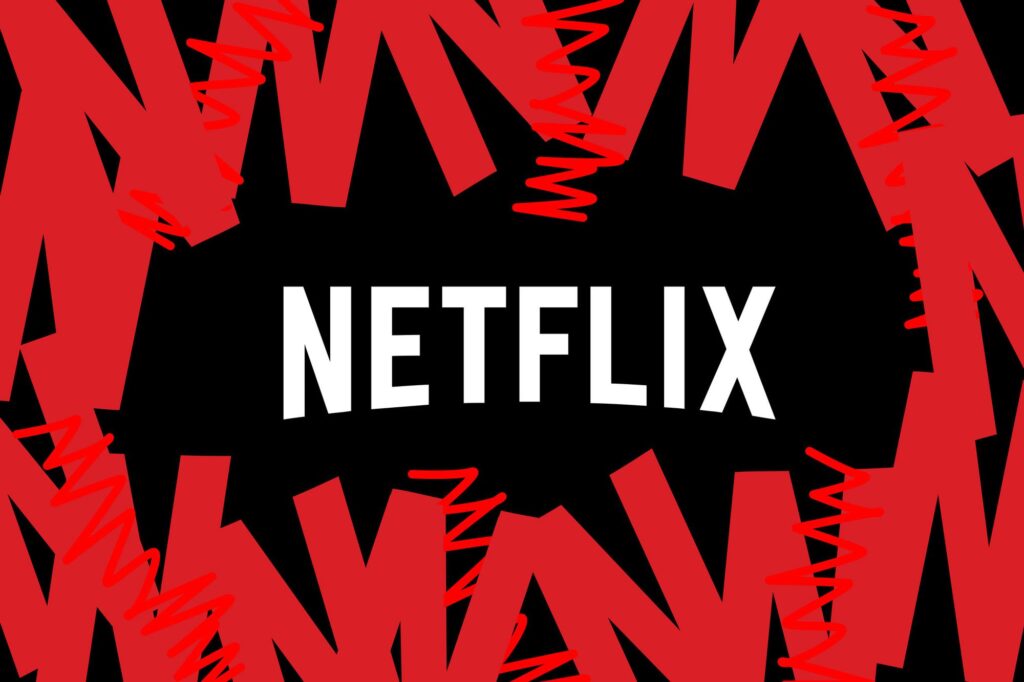Are you tired of unexpected charges from Netflix? Well, you’re not alone. With Netflix’s new policy of sharing the same TV and account within a household, many users are facing additional fees. But fear not, because in this blog post, we will guide you on how to avoid these Netflix charges. From understanding household determination to navigating the new policy, we’ve got you covered. And if you’re looking for a workaround, we’ll even show you how to bypass the charges using a VPN. So, let’s dive in and ensure that your Netflix experience remains cost-effective and hassle-free.
Decoding Netflix’s New Policy: A Closer Look at Account Sharing

netflix
As the digital world continues to evolve, Netflix, a trailblazer in the streaming industry, has once again made headlines with its recent policy change. This policy, specifically targeting account sharing, has been the cause of much debate and consternation among its vast user base. As the dust settles, it’s essential to delve deeper into what this new policy entails and the implications it holds for Netflix subscribers.
Netflix, in its attempt to streamline its user base, has sent out emails to its subscribers, effectively signaling the end of an era where password sharing was a common practice. This move has been met with a mixed response, with some users even going as far as cancelling their subscriptions in protest. However, it’s crucial to understand that this change doesn’t spell doom for all Netflix users. There are still ways to navigate this new policy without incurring additional costs.
Essentially, Netflix’s new policy stipulates that account sharing should be confined to individuals residing in the same household. This means that if you’re living outside this household, you’d either need to have your own account or be prepared to shell out an additional $7.99 per month for each extra member. While this might seem steep at first glance, it’s a fair trade-off when compared to subscribing to an entirely new streaming platform.
It’s also worth noting that this policy change isn’t a blanket rule for all Netflix subscribers. Only those with Standard or Premium plans can avail of these new features. The Standard plan allows for the addition of one extra member, while the Premium plan permits two. These extra members are restricted to streaming and downloading titles on a single device at a time and can only have one profile. If you liked this post check out does netflix come with xfinity and why did netflix remove free trial?
To ensure compliance with this policy, Netflix employs various methods such as tracking IP addresses, device IDs, and account activity. This helps them determine whether a device is streaming content within or outside the designated household. It’s evident that Netflix is making a concerted effort to discourage account sharing by making it a less appealing option for its users.
As we navigate this new policy, it’s important to remember that change is an inherent part of the digital landscape. While this policy change might seem daunting, it’s also an opportunity for users to explore different ways to enjoy their favorite Netflix content.
Delving Deeper into Netflix’s Household Determination

netflix
Netflix’s new policy has transformed the way households are determined, shifting from a user-verification system to a more location-based approach. The key factor in this new determination process is the television used to stream Netflix content. This TV acts as the anchor point for the account, establishing the primary location of usage. This implies that if you’re planning to relocate, you’ll need to sign in to Netflix on a new smart TV at your new residence to redefine your household.
Furthermore, in households with multiple devices, Netflix considers those devices that connect to the same Wi-Fi network as the anchor TV to be part of the household. This means that the household extends beyond the people and includes the devices and their connectivity. So, whether it’s your smartphone, tablet, or laptop, as long as it’s connected to the same Wi-Fi network as your TV, it’s considered part of your Netflix household.
However, this new policy may present challenges for frequent travelers or those who often use Netflix outside their homes. This is because the policy requires users to connect to their home Wi-Fi before signing in on a new device. While this may seem rigid, Netflix views this as a vital step in preserving account integrity and preventing unauthorized sharing.
Previously, Netflix allowed users to verify their devices through a four-digit code sent to the account holder’s email or phone. This method, however, has been replaced by the new household determination system. While this change has stirred controversy, it’s important to remember that it’s aimed at maintaining the quality and fairness of the service for all users.
In essence, the new policy requires Netflix users to be more mindful of their streaming habits, especially when it comes to device usage and location. Understanding these changes can help users adapt to the new rules and continue enjoying their favorite Netflix content without any hitches.
Strategizing Netflix Usage: A Guide To Evade Extra Charges

netflix
For the avid Netflix users who are on the go, or for those who prefer the convenience of their handheld devices over the traditional TV screens, you’re in for a treat. You don’t necessarily need to establish a household for your account if you primarily watch Netflix on devices such as smartphones, tablets, or laptops. This loophole in the policy allows you to enjoy your favorite shows and movies without incurring any additional charges.
While the full-screen experience is undeniably immersive, the versatility and portability of smaller devices offer a unique viewing experience. For those who still crave the big-screen experience, there’s a simple solution. You can mirror your phone’s screen on your TV or connect your laptop to the TV using an HDMI cable. This way, you can enjoy the best of both worlds – the convenience of mobile viewing and the grandeur of the big screen – without digging deeper into your pocket.
Netflix’s decision to impose a £4.99 monthly charge on users sharing their passwords with friends or family outside their household has sparked quite a controversy. This move, though justified from a business perspective, has not been well-received by the user community. If you have any trouble with Netflix find out what to do if netflix is not working and enjoy your favorite shows, also check out how to find and manage Netflix downloaded movies on android.
However, in this digital age, where there’s a will, there’s a way. Some tech-savvy users have found a clever workaround to bypass this extra fee. By using a Virtual Private Network (VPN) or Local Area Network (LAN), they can connect multiple devices through a single network. This tricks the system into thinking all devices are part of the same household, thereby avoiding the extra charge.
Specifically, utilizing a VPN service like NordVPN and its innovative Meshnet feature can prove to be a game-changer. It allows users to operate under the same IP address as the main account, irrespective of their actual location. This is a smart way of making Netflix believe that all users are streaming from the same household.
To leverage this trick, one needs to download NordVPN, sign up, enable the Meshnet feature, and activate the desired devices. The system then sends out invitations to those logged in with their Meshnet turned on. This allows them to watch Netflix freely, without the fear of any extra charges.
While this may seem like a lot of work, it’s a small price to pay for the freedom to share your Netflix account without the burden of additional charges. However, it’s essential to remember that while these strategies can help you navigate the new policy, they are merely workarounds and not foolproof solutions. It’s always best to stay updated with Netflix’s terms of service to avoid any potential issues down the line.
Unraveling the VPN Solution: A Closer Look at NordVPN’s Meshnet Feature
As we delve deeper into the world of tech-savvy Netflix users, it’s evident that they are not backing down in the face of the streaming giant’s new policy. They’re finding creative, albeit temporary, solutions to bypass the extra charges. One such workaround that has been gaining popularity is the use of NordVPN and its unique Meshnet feature.
For those unfamiliar with the term, a VPN, or Virtual Private Network, is a service that provides a secure, encrypted connection to the internet. It masks your IP address, making it seem as if you’re browsing from a different location. NordVPN, a leading provider in the VPN industry, has taken this a step further with its Meshnet feature.
Meshnet, as the name suggests, creates a mesh network, a type of network where each device (or ‘node’) is connected to many others. This makes it possible for data to take several paths from its source to its destination. In the context of Netflix, this means that multiple devices can operate under the same IP address, tricking the platform into thinking all users are in the same household.
Activating this feature is a straightforward process. Users need to download the NordVPN application, create an account, and enable the Meshnet feature. Once this is done, the user can activate the devices they want to include in their network. Invitations will then be sent to those logged in with Meshnet turned on. This allows users to share their Netflix account without worrying about the additional charges, at least for the time being.
While this method appears to be a clever solution, it’s important to remember that it’s not a guaranteed long-term fix. Netflix, like any tech company, is constantly updating its algorithms and policies. Therefore, staying informed and adaptable is key. As we navigate this new era of streaming, it’s essential to keep exploring innovative solutions and stay one step ahead.
FAQ & Users Questions
1. Has Netflix ended free password sharing in the U.S.?
Yes, Netflix has ended free password sharing in the U.S. and users have received emails confirming the end of password sharing.
2. Are borrowed accounts being blocked from watching?
Yes, borrowed accounts may have already been blocked from watching.
3. Are there still ways to avoid paying for password sharing?
Yes, despite the new rules, there are still ways to avoid paying for password sharing.
4. How much does Netflix charge for extra members?
Netflix charges $7.99 per month per extra member, which could be equivalent to subscribing to another streaming platform.
5. How many extra members can be added to a Netflix account?
Standard plan subscribers can only add one extra member, while Premium plan subscribers can add two.
6. Can extra members stream and download titles on multiple devices at the same time?
No, extra members can only stream and download titles on one device at a time.
7. How does Netflix determine the members of a household?
Netflix determines the members of a household based on the TV used to watch their content and the devices that connect to the same wifi as the TV.
8. How can users avoid the new policy requiring login on home wifi?
Users can avoid this policy by signing in on their device(s) at the house of the account owner and then watching on their own wifi.
9. Can users still watch Netflix on devices like phones, tablets, and laptops without additional charges?
Yes, users can still watch Netflix on devices like phones, tablets, and laptops without any additional charges if they don’t watch on a smart TV or streaming box.
10. How are some users avoiding the new charge for sharing passwords?
Some users are using VPNs or LANs to connect multiple devices to one network and avoid the charges. Specifically, using NordVPN and its Meshnet feature allows users to use the same IP address as the main account without being in the same household.
